Citrine Collector’s Guide: Unveiling the Rare Beauty of a Prized Gemstone
Introduction
Did you know that Citrine, often referred to as the ‘merchant’s stone’, has been cherished not just for its captivating golden hue but also for its supposed ability to attract wealth and prosperity? This radiant gem, a favorite among both novice and seasoned collectors, is not only known for its aesthetic appeal but also its fascinating properties and historical significance. In this comprehensive guide, we’ll dive into the world of Citrine, exploring the unique aspects that make it a standout in the gemstone kingdom.
Historical Significance of Citrine
Citrine’s journey through history is as colorful as the stone itself. This gemstone was highly valued by ancient civilizations for its rarity and beauty. Notably, Citrine has graced the collections of royalty and was often worn as a symbol of status and wealth. It’s believed that Greek traders named the stone after its lemon-like color, and since then, it has adorned many a crown and scepter. Delving into notable events, Citrine was particularly popular during the Art Deco period, as evidenced by its frequent use in the lavish jewelry of that era.
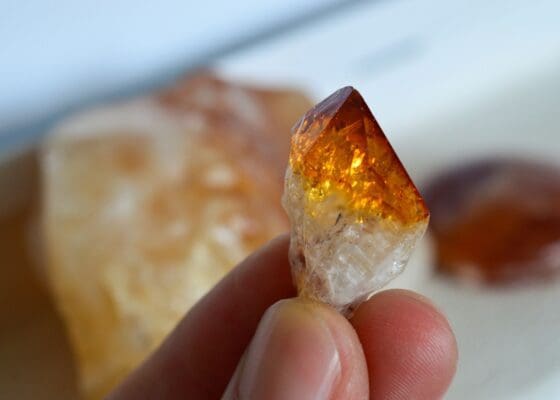
Geological Formation and Properties of Citrine
Citrine, a variant of quartz, is formed when amethyst undergoes heat treatment, whether naturally by geological processes or artificially. This process results in its signature warm yellow to brownish-orange color. What sets Citrine apart in the mineral world is its crystal structure – a trait it shares with its quartz cousins. However, the presence of iron impurities gives it that unique golden shade. Its hardness, measured at 7 on the Mohs scale, along with its vitreous luster, makes it not only beautiful but also durable for various types of jewelry.
Rarity, Collector’s Perspective, and Identifying Fakes
Rarity and Value in the Collector’s Market: Among the array of gemstones cherished by collectors, Citrine stands out for its captivating golden hue. Its rarity, particularly in its natural form, significantly adds to its value. Natural Citrine, which is less common than its heat-treated counterpart, is especially sought after by enthusiasts and collectors. This variant, often found in pale yellow shades, is prized for its uniqueness and natural beauty.
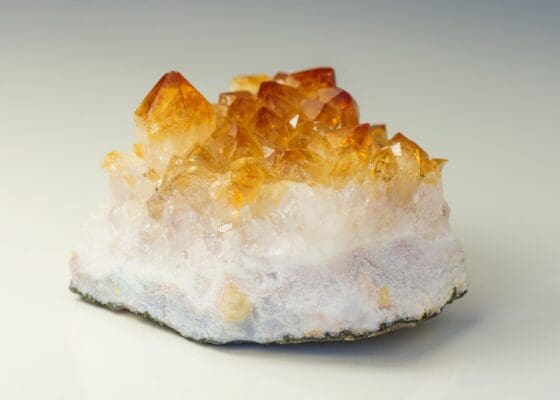
Identifying Natural vs. Treated Citrine: Distinguishing between natural and heat-treated Citrine can be a subtle art. Natural Citrine typically exhibits a pale, subdued color, in contrast to the more vibrant oranges and reds seen in heat-treated stones. Additionally, natural specimens may have more inclusions and a less uniform color distribution. Heat treatment, commonly used to enhance the color of Citrine, can often be identified by a burnt orange or reddish hue, which is not typically found in natural stones.
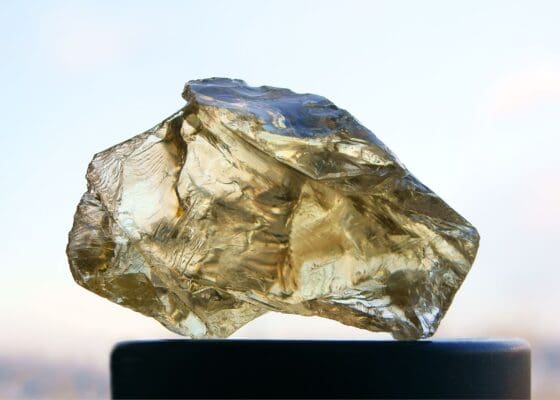
Common Treatments and Enhancements: Apart from heat treatment, Citrine may undergo other enhancements to improve its appearance. These can include irradiation to deepen the color or clarity enhancements. Understanding these treatments is crucial for collectors who value the authenticity and natural state of their gemstones.
Market Value of Citrine
Current Market Value: The market value of Citrine can vary widely based on several factors. Natural Citrine tends to command a higher price due to its rarity. The value also depends on the stone’s color intensity, with deeper golden hues generally being more desirable.
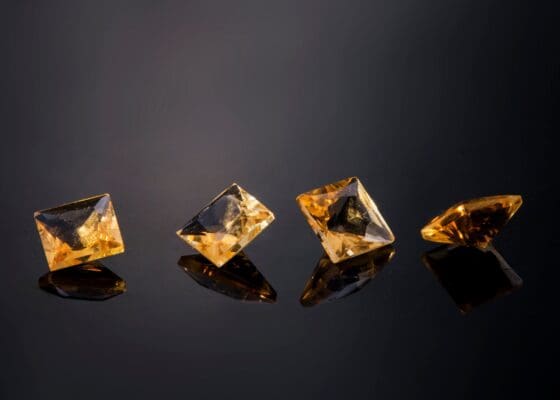
Factors Influencing Price: The price of Citrine is influenced by its size, color, clarity, and cut. Larger stones with deep, saturated colors and fewer inclusions are typically more valuable. The gemstone’s origin can also impact its value, with some locations being more esteemed due to the quality and characteristics of the Citrine they produce.
Major Locations and Mining of Citrine
Key Mining Locations: Citrine is primarily mined in Brazil, which is renowned for producing large quantities of this gemstone. Other significant sources include Madagascar, Spain, Russia, and several African countries. Each location contributes its unique shade and quality to the Citrine it produces.
Public Gem Mining Opportunities: In some regions, especially in the U.S., there are public gem mines where enthusiasts can try their luck at unearthing their own Citrine. These mines offer a hands-on experience for those interested in the process of discovering and collecting gemstones. Information about such opportunities can usually be found on local tourism websites or through gem enthusiast communities.
Uses and Applications of Citrine
Citrine in Various Industries: Beyond its obvious allure in the world of gemstones and jewelry, Citrine finds its place in various industries owing to its unique properties. In the realm of interior decor, high-quality Citrine crystals are often used as exquisite decorative pieces, enhancing the aesthetics of luxury spaces. Additionally, due to its hardness and durability, Citrine is sometimes used in industrial applications where abrasive materials are required.
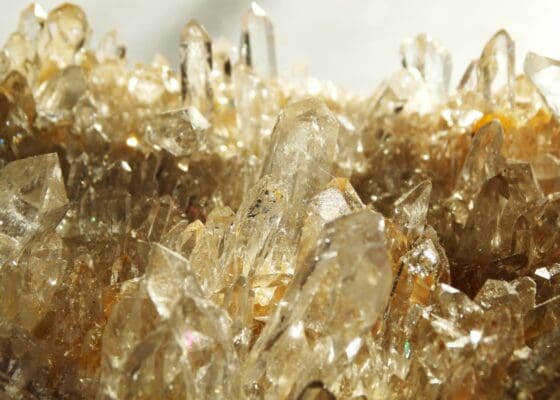
Unique Applications: One of the more intriguing uses of Citrine is in the realm of holistic wellness and alternative therapies. It is believed by some to possess healing properties, contributing to physical and emotional well-being. This aspect of Citrine has led to its use in various wellness products and as a popular stone in crystal therapy.
Metaphysical Properties, Beliefs, and Birthstone Information
Metaphysical Beliefs: Citrine is often celebrated for its supposed metaphysical properties. It is believed to radiate positive energy, fostering a sense of optimism and clarity. Many also associate it with attracting wealth and success, earning it the moniker ‘merchant’s stone’. These beliefs have made Citrine a staple in practices that focus on spiritual and emotional healing.
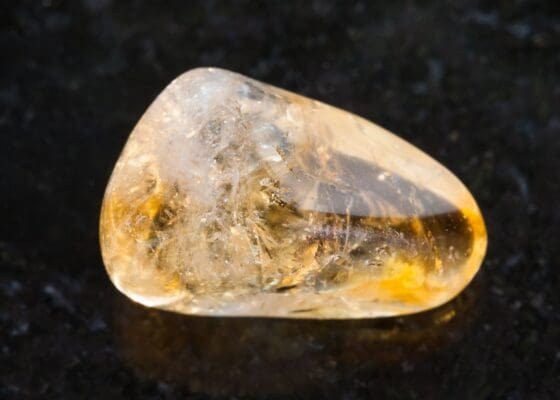
Citrine as a Birthstone: Citrine is recognized as the birthstone for November. It symbolizes hope, strength, and vitality, making it a cherished gift for those born in this month. Its warm, sunny color is thought to bring cheerfulness and success to the wearer, aligning with the positive attributes of those with November birthdays.
Citrine in Jewelry
Usage in Jewelry Making: Citrine’s vibrant color and durability make it a favorite among jewelry designers. It is used in various types of jewelry, from elegant necklaces and rings to statement earrings and bracelets. Its versatility allows it to be set in both gold and silver, complementing different styles and preferences.
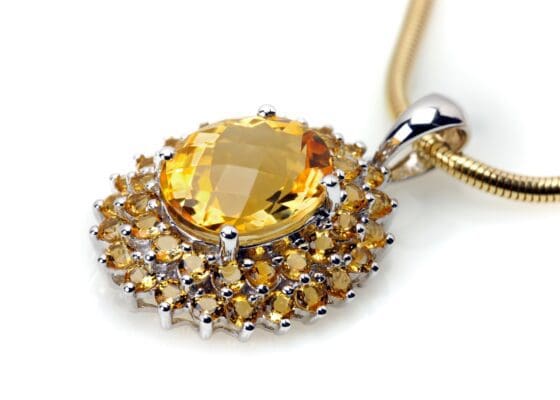
Popular Jewelry Styles: In jewelry, Citrine ranges from classic, understated pieces to bold, contemporary designs. It is often cut in various shapes, including traditional round and oval cuts, as well as more modern cuts like emerald or princess. Citrine’s affordability compared to other gemstones also allows for its use in larger, more dramatic pieces, making it a popular choice for those seeking statement jewelry with a touch of luxury.
Fun Facts and Trivia about Citrine
The Name ‘Citrine’: The name ‘Citrine’ is derived from the French word ‘citron’, meaning lemon, a nod to its lemon-yellow color. However, the hues of Citrine can range from a pale yellow to a deep amber, drawing comparisons to the sun.
Royal Adornment: Citrine has been a favorite among royalty throughout history. Queen Victoria of England was known to have a fondness for this gemstone, and Citrine jewelry was notably popular among the Scottish highlanders during her reign.
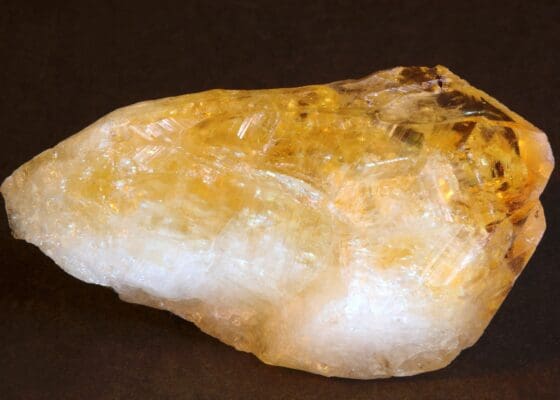
Hollywood’s Golden Era: In the glamorous Hollywood of the 1940s, Citrine was the go-to gemstone for movie stars. Its golden color was believed to complement the technicolor film process beautifully.
Brazilian Pride: Brazil is the largest producer of Citrine in the world. Some of the largest and most spectacular specimens of Citrine have been found in Brazilian mines.
Answers to Top Questions from Google’s ‘People Also Ask’
- What is Citrine crystal good for?
Citrine is famed for its supposed ability to attract wealth, prosperity, and success. It’s also believed to promote motivation, activate creativity, and encourage self-expression. - Why is Citrine so powerful?
Many believe Citrine to be powerful due to its association with the sun and its ability to hold and transmute light, which is thought to energize and rejuvenate the wearer. - Who should not wear Citrine stone?
While there are no specific restrictions, it’s suggested that those who are easily agitated or hot-tempered might want to avoid Citrine, as it’s believed to carry the energy of the sun, which could exacerbate these traits. - What does Citrine gem do?
Citrine is said to dispel negativity, encourage positivity, and attract prosperity. It’s also thought to promote clarity of thought and improve one’s mood. - Which zodiac should wear Citrine?
Citrine is particularly beneficial for those born under the signs of Aries, Gemini, Leo, and Libra, aligning with their vibrant and positive nature. - What happens when you wear Citrine?
Wearing Citrine is believed to bring about a sense of optimism and cheerfulness. It’s also thought to foster success in new ventures and wealth creation. - What happens if you sleep with a Citrine crystal?
Sleeping with Citrine is said to promote restful sleep, vivid dreams, and help in manifesting one’s intentions. - How do you activate Citrine stone?
To activate Citrine, it’s recommended to cleanse it first (using smudging or salt water) and then set your intention for the stone, either through meditation or by verbal affirmation. - Is it good to sleep with Citrine?
Sleeping with Citrine can be beneficial for some, as it’s believed to aid in overcoming fear, promoting a sense of security, and encouraging a good night’s sleep.
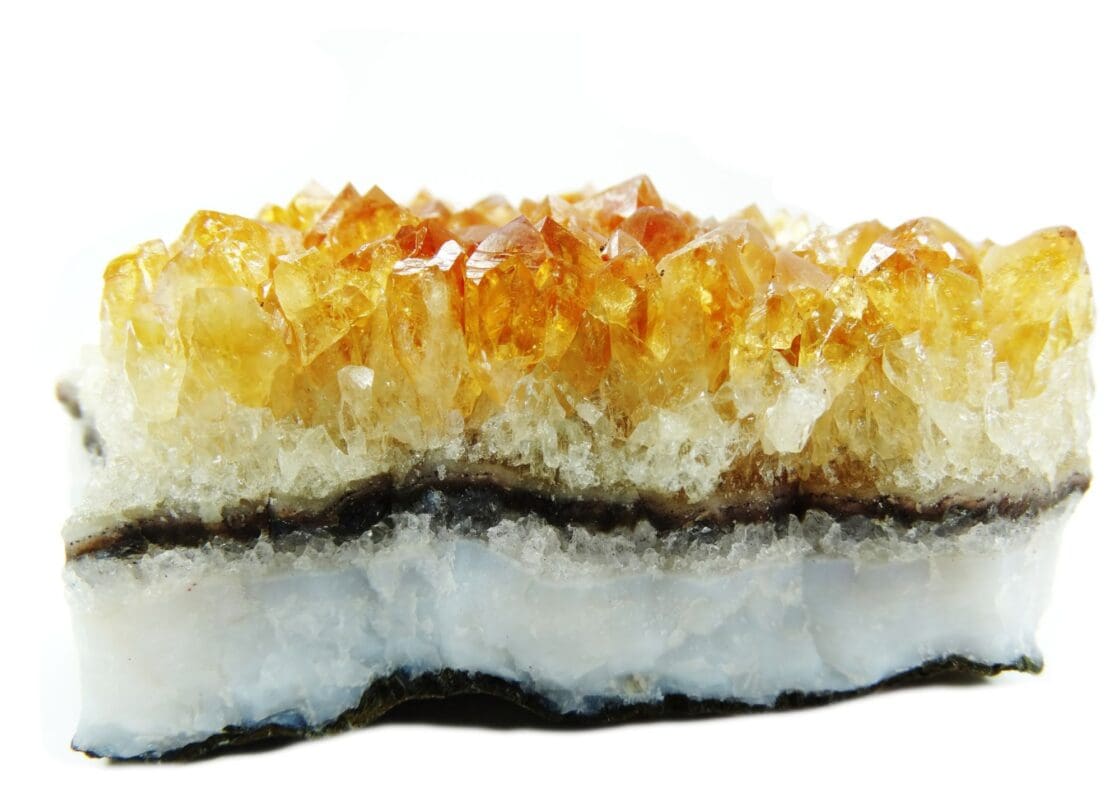
Citrine Quiz: Test Your Knowledge!
1. What is the origin of the name ‘Citrine’?
A) From the Latin word for ‘gold’
B) From the Greek word for ‘citrus’
C) From the French word for ‘lemon’
2. What is the Mohs scale hardness of Citrine?
A) 5
B) 7
C) 9
3. Which era saw a rise in the popularity of Citrine jewelry?
A) Victorian Era
B) Art Deco Period
C) Renaissance
4. What metaphysical property is Citrine believed to have?
A) Inducing sleep
B) Attracting wealth
C) Enhancing physical strength
5. Which zodiac signs are said to benefit most from wearing Citrine?
A) Aries, Gemini, Leo, and Libra
B) Taurus, Virgo, Scorpio, and Capricorn
C) Cancer, Sagittarius, Aquarius, and Pisces
Check your answers below and see how well you know about Citrine! Whether you’re a gemstone aficionado or just starting, learning about Citrine is always fascinating. Share your score in the comments and let’s discuss more about this beautiful gemstone!
Conclusion
As we reach the end of our journey into the golden world of Citrine, it’s clear why this gemstone has captivated hearts for centuries. From its sun-kissed hues that range from pale yellow to deep amber to its storied history and metaphysical properties, Citrine is truly a marvel of the natural world. Its blend of beauty, rarity, and versatility makes it a cherished choice for collectors, jewelry enthusiasts, and those drawn to its supposed energy of prosperity and positivity.
For those who have been enchanted by the allure of Citrine, we invite you to explore our collection of Citrine products. Whether you’re looking for a stunning piece of jewelry to add to your collection, a unique decorative item, or a special gift for someone born in November, our selection offers something for every Citrine lover. Visit our [Citrine Collection] to discover the perfect piece that resonates with you.
Related Rocks and Minerals
If your interest in Citrine has piqued your curiosity about other gemstones, consider exploring these related articles and products:
- Amethyst: Discover the rich, royal purple hues of Citrine’s close cousin.
- Topaz: Another November birthstone, known for its impressive range of colors.
- Quartz Varieties: A comprehensive look at the diverse world of quartz minerals.
- Garnet: Explore the deep reds and varied spectrum of the garnet family.
- Aquamarine: Dive into the serene blues of this calming and elegant gemstone.
These suggestions offer a pathway to further explore the fascinating world of gemstones, each with its unique beauty and history.
References and Further Reading
For those who wish to delve deeper into the world of Citrine, we recommend the following credible sources:
- Gemological Institute of America (GIA): Provides detailed insights into Citrine’s properties and history.
- Mineralogical Society of America: Offers comprehensive information about Citrine’s geological aspects.
Additionally, for further exploration of gemstones and their captivating stories, visit our articles:
- [Understanding Gemstone Treatments] – Coming Soon
- [The History of Birthstones]- Coming Soon
These resources and articles are curated to enhance your knowledge and appreciation of gemstones, ensuring that your journey into the world of Citrine and beyond is both informative and enriching.
Answers to the Quiz:
- Answer: C) From the French word for ‘lemon’
- Answer: B) 7
- Answer: B) Art Deco Period
- Answer: B) Attracting wealth
- Answer: A) Aries, Gemini, Leo, and Libra

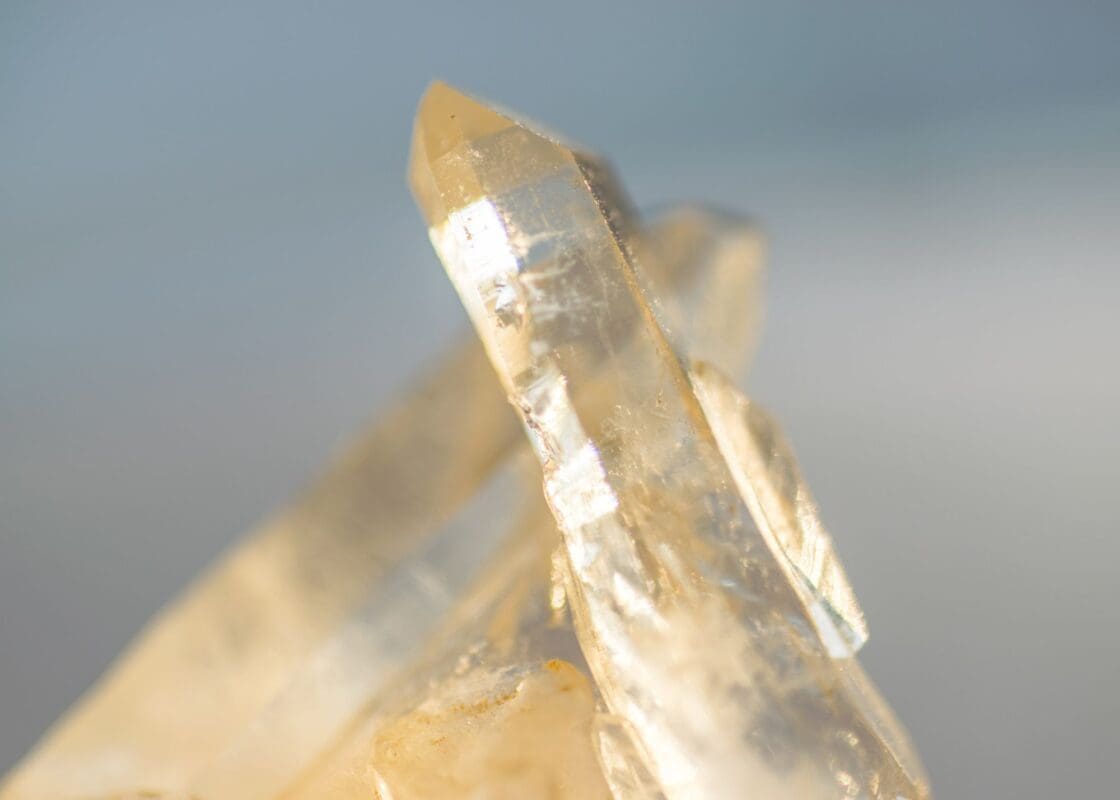
This guide beautifully blends history, geology, and practical advice for collectors. I especially loved the section on identifying natural Citrine versus heat-treated amethyst—those subtle color differences are so intriguing! Did anyone else find the historical tidbits about Citrine in the Art Deco era as captivating as I did? It’s amazing to think about these gems adorning crowns and scepters. Has anyone here tried their luck at one of those public gem mines? Sounds like a fun adventure! Let’s chat more about this golden beauty! 💛✨